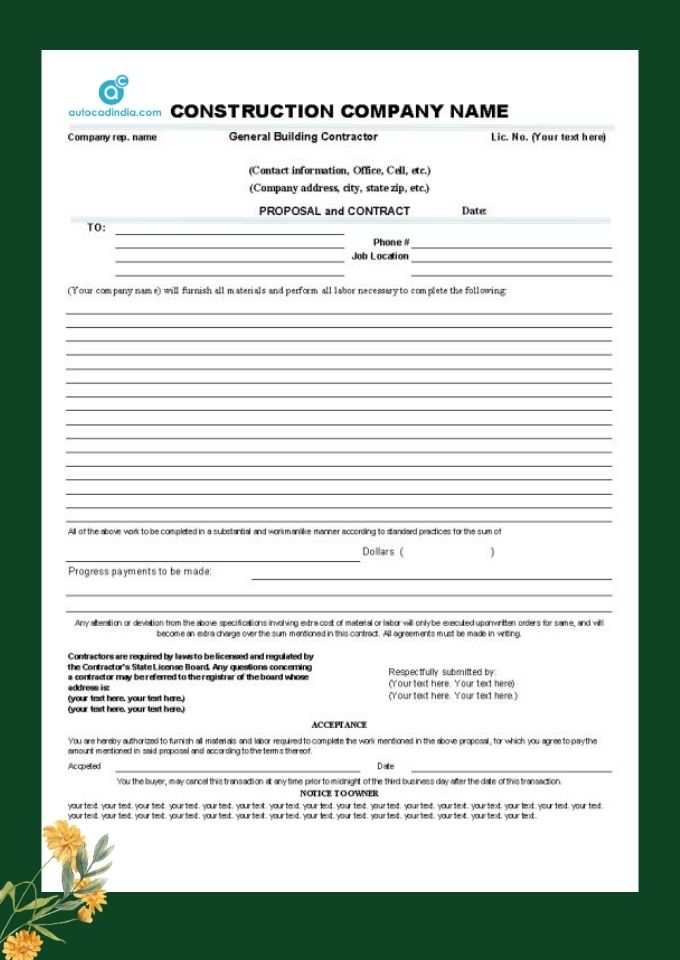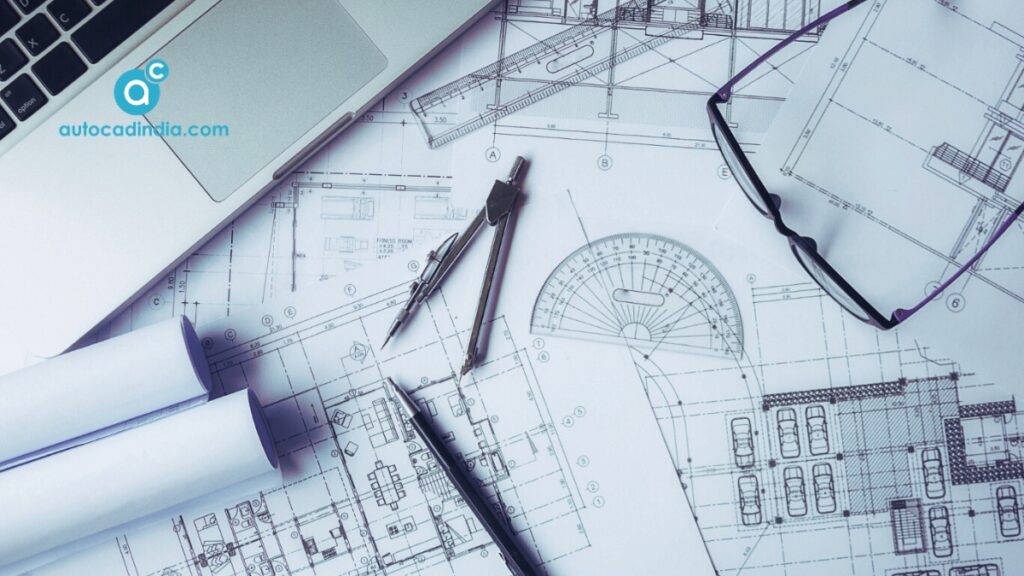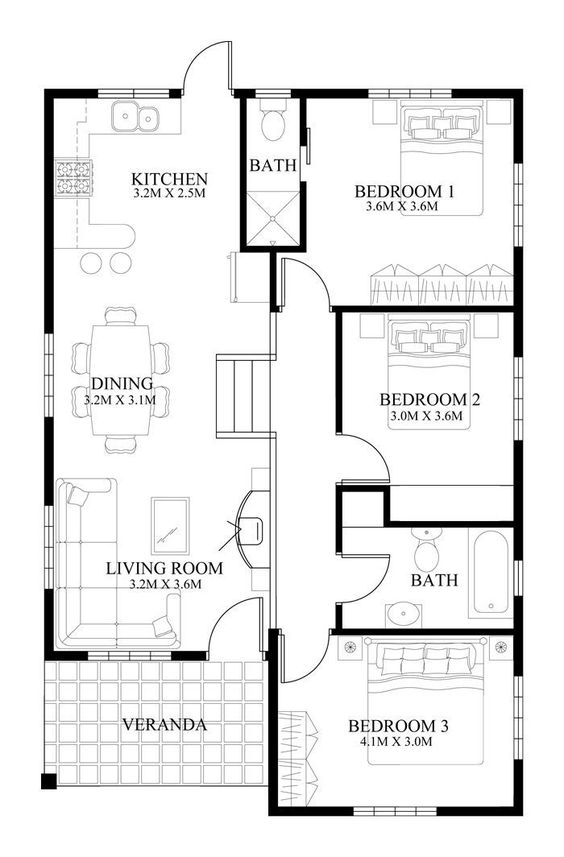18 Must-Have Construction Documents for Every AEC Project
- May 7, 2025
The primary purpose of the construction documents is to provide clear guidelines and specifications by detailing the project scope, timelines, budget and deliverables. As a result, they ensure the construction process aligns with the project goals.
Introduction to Construction Documents
Construction documents are a detail set of written and graphic blueprint that define the components, requirements, and provisions in different phases of a construction project. These documents, as a backbone, hold the whole process to keep it on the right track from start to finish.
Let’s dive into the 18 essential types of construction documents that form the backbone of any AEC project. While not every document fits every project’s path, having a complete set leaves no room for risk, guiding your project with precision and care from start to finish.
Importance of Construction Documents in Project Management
In project management, construction documents lay the foundation for successful project execution. They facilitate collaboration and coordination in communication among various stakeholders, including architects, engineers, contractors, and clients.
The documents help in minimizing misunderstandings, collision of future errors, and enhances accountability by providing a clear sequential framework for responsibilities and expectations.
What is the Purpose of Construction Documents?
Construction documents serve two primary purposes: obtaining a building permit and guiding the construction process.
High-quality construction documents provide a detailed representation of the design, ensuring that the contractor fully understands the architect’s or engineer’s objectives.
Generally, the permit set is submitted first to address any issues during the permitting process, which can then be corrected in the construction set. For a building to receive its final certificate of completion, it must closely match the construction documents submitted in the permit set.
Key Takeaways
- Construction documents define the components, requirements, and provisions in different phases of a construction project.
- They provide clear guidelines on project scope, timelines, budget, and deliverables, ensuring alignment with project goals.
- Effective document management minimizes errors, miscommunications, and delays, and should be set up at the beginning of the project.
- Construction documents facilitate collaboration among stakeholders and help reduce misunderstandings and errors.
- They are essential for obtaining building permits and guiding the construction process.
- Key documents include drawings, specifications, bidding documents, contracts, and permits.
- Proper organization and management of documents are crucial for efficient project execution and long-term maintenance.
Types of Construction Documents
Construction documents consist of two main divisions: drawings and specifications. All documents are a result of the supplementary effects of these two purposes.
Every discipline of building structure—such as architecture, structural, mechanical, electrical, plumbing, landscape architecture, and civil engineering—produces both drawings and specifications as part of their construction documents.
There are many types of documents used at different stages of the construction process. Here’s a prioritized list of construction documents based on their necessity:
1. Bidding Documents
2. Contract Agreement Documents
3. General Condition
4. Scope of Work
5. Specifications
6. Architectural Drawings
7. Structural Drawings
8. Construction Schedule and timeframes
9. Requests for Information
10. Change Orders
11. Submittals
12. Permits and license
13. Daily Reports
14. Safety Reports
16. Cost Estimate
17. Insurance
18. As-Built Drawing
This list can vary depending on the specific project and its requirements.
All the document types are neither always the same for all projects nor needed also.
1. Bidding Documents
Standard Bidding documents guide bidders on how to participate effectively. They include instructions to bidders, which outline the steps for preparing and submitting bids.

Source: https://www.smartsheet.com/content/construction-bid-templates-and-forms
Bidding documents ensure the selection of contractors, suppliers, or service providers through five key steps:
- Bid proposal,
- Bid submission,
- Bid selection,
- Contract formation, and
- Project delivery.
Click the link to get the template
Bidding Excel Template
These documents require essential information for preparing and qualifying bids. Once a contractor wins the bid, the contract documents formalize the terms to complete the project successfully.
Technical specifications and requirements provide detailed descriptions of the goods, services, or works being procured, ensuring bidders understand what is needed. Evaluation criteria explain how the bids will be assessed and what factors will influence the selection process.
Bid forms are standardized templates that bidders must complete, such as price schedules and technical proposals, ensuring consistency and clarity in submissions.
This is some criteria of Bidding Documents of Philippine, it includes
- Invitation to Apply for Eligibility and to Bid (IAEB);
- Eligibility Documents.
- Eligibility Data Sheet.
- Instructions to Bidders (ITB);
- Bid Data Sheet (BDS).
- General Conditions of Contract (GCC),
- Special Conditions of Contract (SCC),
- Specifications.
- Drawings.
- Bill of Quantities; and
- Forms and Qualification Information
2. Contract Agreement Documents
Once a bidder is chosen, the bidding documents transform into contract documents or an agreement. These legal documents formalize the terms and conditions between the Procuring Entity and the winning bidder. The contract documents, often called a Construction Agreement, outline the rights, responsibilities, the scope of work and obligations of each party, payment terms, and procedures for changes, disputes, and termination.

Source: Pinterest.com
This helps ensure clarity and reduces the risk of disputes. Key elements typically included in contract documents are:
- Roles and Responsibilities of Parties
- Time
- Price & Payments
- Changes
- Suspension & Termination
- Claims and Disputes
3. General Conditions
These documents are part of the contract and present the costs and administrative or logistical details needed to complete a project. They include indirect costs such as project management, site facilities, security, temporary utilities, and other essential elements that aren’t directly linked to specific construction tasks but are crucial for the project’s overall execution.
In essence, they cover the necessary expenses to successfully complete a project, beyond the direct costs of labor, materials, and equipment for specific trades. These indirect costs can also encompass the general contractor’s workforce, like
- Project Management: This includes administrative tasks, coordination, and oversight.
- Temporary Facilities: These are on-site facilities like job trailers, restrooms, and storage units.
- Safety and Security: Measures to ensure a safe working environment.
- Cleanup and Waste Removal: Managing debris and waste on the construction site.
4. Scope of Work (SOW)
The Scope of Work (SOW) in contract documents is a vital section that clearly defines the tasks, deliverables, and timelines for a project. It acts as a comprehensive guide for both the client and the contractor, making sure everyone understands what needs to be accomplished.
This clarity is crucial for effective project management and ensuring the contract is executed successfully. What a SOW documentation does:
- Clearly defines the goals and the project aims to achieve.
- Lists all the tasks to be completed and the deliverables expected at the end of the project.
- Specifies the start and end dates, along with any important milestones.
- Details who is responsible for what, ensuring accountability.
- Sets the quality standards and criteria for acceptance of the work.
- Outlines how and when payments will be made.
5.Project Brief in Construction Documents
Think of A Project Brief as a high-level summary that provides a clear understanding of the main goals, objectives, and key deliverables of the project.
The Scope of Work (SOW) is closely related to the Project Brief. While the Project Brief provides an overview, the SOW dives into the specifics.
Several documents support the Project Brief, ensuring that all aspects of the project are well-documented and understood:
1. Project Plan: Outlines the detailed steps and schedule for the project.
2. Budget Estimates: Provides a financial overview and cost breakdown.
3. Technical Specifications: Details the technical requirements and standards.
4. Risk Management Plan: Identifies potential risks and mitigation strategies.
5. Stakeholder Analysis: Lists all stakeholders and their roles.
6. Specifications and Standards:
Specifications and standards provide the detail of quality and performance requirements of materials and workmanship. This document can include product data, installation instructions, and testing methods.
They provide guidelines for contractors on how to execute various aspects of the project and ensure compliance with industry standards.
They serve as a guide to ensure the project is completed correctly and to the desired quality. Here are the key components:
- Materials: Details the types and quality of materials required for the project. It covers everything from concrete and steel to finishes and fixtures, ensuring that all materials meet the necessary standards.
- Workmanship: Details the standards of work expected, including techniques and methods to be used during construction.
- Equipment: Lists the machinery and tools that are required for the project.
- Testing and Inspections: Describes the tests and inspections that must be carried out to ensure materials and workmanship meet the required standards.
- Standards and Codes: References the industry standards and building codes that must be adhered to.
- Submittals: Specifies the documents that contractors must submit for approval, such as shop drawings, product data, and samples.
- Quality Control: Outlines the procedures for ensuring the quality of materials and workmanship throughout the project.
7. Architectural Drawings
Architectural drawings are essential for visualizing building designs. They provide detailed graphic illustrations that can highlight the layout, floor plans, and relationships within a project.
These drawings are crucial for ensuring that every aspect of the design is clearly communicated and accurately constructed.

Architectural drawings come in various types, each serving a specific purpose in the design and construction process. Here are some of the most common types:
1. Site Plan: Depiction of the entire property as seen from above, including a comprehensive layout of the entire site of boundaries, existing structures, and proposed buildings.
It helps in understanding the spatial relationships and overall design of the area, making it easier to plan and visualize the project.
2. Floor Plan: A floor plan provides a bird’s-eye view of the arrangement of rooms, spaces, and physical features on a single level. serving as a detailed map of a building’s layout.
In construction documents, floor plans are indispensable for architects, builders, and clients. By illustrating the placement of walls, doors, windows, and fixtures, floor plans help in understanding the functionality and movement within the building.

3. MEP Drawings: MEP plans are a crucial component of architectural drawings, showcasing the layout and design of mechanical, electrical, and plumbing systems in a building.
MEP plans illustrate the precise placement and specifications of HVAC systems, electrical wiring, and plumbing fixtures.
These comprehensive drawings provide essential information for construction teams, architects, and engineers, ensuring that all building systems function efficiently and safely.
4. Detail Drawings: Focus on specific parts of the building, such as windows, doors, or staircases, providing intricate details for construction.
8. Structural Drawing Plans
Unlike architectural drawings, structural or engineering drawings concentrate on the anatomical aspects of a building’s framework, including electrical, plumbing, and mechanical systems.
These plans are developed with the input of structural engineers to prevent code violations and ensure both safety and functionality.
The documentation must be carefully crafted to provide clear, precise information to various professionals involved in the production, construction, and maintenance of the structure, ensuring a seamless and compliant building process. Some important structural drawings include:
Engineering Drawing: Engineering drawings are detailed structural plans that highlight the key components of a building. They display essential reference materials for workers throughout the construction process.
Column Layout: This drawing specifies the design and arrangement of columns within the structure, indicating how the building is divided into floors. It also details the size, spacing, and positioning of each column.
Plinth Beam Layout: Plinth beam or Tie beam layouts is a reinforced concrete beam that links a wall to its foundation, preventing cracks from spreading and evenly distributing the wall’s load across the foundation to ensure structural stability.
Lintel Beam Layout: A lintel beam is a horizontal structural element that comes in above the plinth level that ensures the base or foundation of a building. Lintels are commonly used above such as portals, doors, windows and fireplaces.
Roof Beam: This layout document provides details about the roof beam sizes and spacing. The beams can be triangular or rectangular in shape. They may be made up from wood, steel, or concrete. These beams are designed to support the building’s roof structure.
Roof Slab Layout: Created in tools like AutoCAD, roof slab layouts offer precise details about the roof’s surfaces, edges, and levels, ensuring accuracy in construction. Roof slabs serve two functions one is as the ceiling for the lower floor and the other as the base for the upper floor.
Block Plan: A block plan layout is a scaled map that shows the main building and its surroundings, like nearby buildings, property lines, and roads. It uses different symbols to mark boundaries and other details.
Component Drawings: These drawings are created to show all the parts of a product and how they fit together. They include details about individual components like beams, windows, doors, and more.
Concept Drawings: Concept drawings provide initial, rough sketches of a construction project, giving a broad overview for clients or stakeholders without delving into intricate details.
Assembly Drawings: These illustrations demonstrate how different structural components come together, often including sectional, elevation, and 3D views for a clearer understanding of the assembly process.
9. Schedules and Timeframes
Schedules and timeframes determine the project’s timeline, including start and completion dates, milestones, and deadlines for specific tasks. This helps ensure the project stays on track both financially and timewise
Additionally, a cost breakdown of schedule documents details in the financial investment for each part of a construction project, giving a clear picture of how the budget is being spent. This allows key stakeholders to review expenses, track budget distribution at each phase, and adjust spending as needed before final payments are made.
10. Request for Information (RFI)
A Request for Information (RFI) is a formal process used in construction to seek clarification about documents, drawings, specifications, or other project conditions.
Contractors may submit RFIs to understand project details better and polish their quotes. They should use clear and concise language to avoid misunderstandings. by resolving information gaps in construction documents.
During the construction phase, this documentation may include any relevant drawings or documents that can aid in providing a response.
Properly managing RFIs can significantly improve project outcomes and reduce the risk of costly errors and delays. Any sort of delays in responding to RFIs can lead to increased project costs and other issues.
11. Change Orders and Amendments
Change orders and amendments are construction documents for formal requests that modify the original contract terms. They often may be necessary due to changes in project scope, design alterations, or unexpected conditions. This protects all parties from potential disputes and ensures appropriate compensation for any unexpected labor or expenses.
12. Submittals
Submittals may include drawings, documents, or mock-ups that are written or created by the contractor and submitted to the owner or the architect or the consultant.
The architect verifies and approves of the Bills of Quantity (BoQ), Bill of Materials (BoM) presenting the costs of equipment, materials, products and labor.
This construction document is often needed to submit in the beginning of any new construction phase because they define the project and its goals clearly to everyone involved. Well-crafted submittals help avoid, or at least reduce the probability of change orders later in the project.
The elements required in a submittal can differ based on the project’s specifics, but some key components typically include:
- Shop drawings: Shop drawings are detailed documents that specify project dimensions and raw material that the contractor will procure. They are often grouped with other construction documents like blueprints and diagrams. Architects and engineers review these drawings to ensure they match the construction contract.
- Product Specifications & Technical Data: A detailed list of product and equipment specifications, outlining machinery items like steel beams, masonry, and paint. They also provide specific technical data on product formulation and warranties.
- Product Samples & Mock-ups: Product samples help stakeholders visualize the final results, especially for aesthetic components like tiles and fixtures. They allow owners and architects to assess quality and cohesion. Sometimes, a mock-up of a project section is created to identify potential issues.
13. Daily reports
Creating daily reports is a must and professional practice in construction documentation. It fills up with daily activities on site that a construction team is going to do. It keeps all the concerned authority up to date in progress to track daily work and avoid any discrepancy during the operation. The daily construction report includes
1. Work Description
2. Equipment Used
3. Materials Delivered
4. Site Visitors
5. Meetings or Communication Held
6. Inspections
7. Safety Accidents
8. Quality Issues
9. Subcontractors On-site
10. Notes
14. Permits and Licenses
Permits and licenses are essential legal requirements for property owners or their authorized agents when planning to construct, expand, modify, repair, relocate, demolish, or change the use of a building or structure.
These permits, alongside necessary inspections, are mandatory for all construction-related activities, including electrical, mechanical, fire control, and plumbing work, ensuring compliance with State regulations and adherence to approved plans.
If your construction company fails to follow business license regulations in any given jurisdiction, it can lead to substantial fines, reaching around tens of thousands of dollars. That’s why, it is strongly advised to consult the local building inspection department before initiating any project to determine if a permit is required.
Additionally, checking with the municipal office regarding zoning regulations is a prudent step to avoid future complications. All materials used, along with their installation, must strictly follow State Codes and the manufacturer’s installation guidelines to meet legal and safety standards.
15. Safety Reports
Construction activities have potential risks for both workers and the surrounding public if appropriate safety measures are not implemented. Ensuring site safety is a critical priority in the construction industry.
Construction safety reports are designed to evaluate and enhance the safety procedures, potential hazards, and regulatory compliance of a site.
These reports serve as essential resources for construction managers, safety officers, and team members, to identify probable risks, adopt preventive strategies, and maintain a secure working environment.
Construction safety reports are not only quite crucial in preventing future accidents, but also in ensuring adherence to both local and international safety standards.
Key elements typically covered in construction safety reports include:
1. Personal protective equipment (PPE)
2. Housekeeping
3. Tools and materials
4. Fall prevention
5. Electrical safety
6. Fire prevention
7. Heavy equipment
8. First aid and signage
16. Cost Estimate report
A cost estimation report is a type of construction documents that calculates the total projected expenses for a new construction project, covering both direct and indirect costs. It is sort of a part of the bidding documents, but it has its own significance as well.
The primary function of this report is to help contractors determine whether to submit a bid for the project based on the projected costs.
Such reports generally include a detailed project description, the overall quoted price, and a breakdown of individual cost components. Additionally, they may specify the project’s terms and conditions, timelines, and other pertinent details essential for contractors to make informed decisions.
17. Insurance
Construction is a high-risk industry, where every individual or entity involved in a project, from workers to property owners, holds a significant financial, health stakes or even life-risks in its process.
To mitigate these kinds of potential losses, various forms of insurance are available. These insurances are designed to protect construction companies, property owners, workers and other stakeholders. They cover risks that may arise during a building project or within normal business operations.
These insurance policies provide crucial protection against unforeseen incidents, ensuring that the parties involved are covered against potential liabilities or damages throughout the project’s lifecycle.
18. As-built drawing sets
As-built drawings, also called red-line drawings or as-builts, are revised versions of the basic or initial plans, submitted by the contractor upon project completion. They offer an accurate depiction of the finished building, capturing any deviations from the original design.
Every construction project begins with the creation of initial plans, commonly known as shop drawings, which must be finalized and approved prior to the start of construction. These drawings detail the building’s specifications and measurements, serving as the foundational guide for the construction process.
However, as construction progresses, modifications and adjustments are often required due to challenges like material shortages, regulatory requirements, or fabrication issues. As a result, the original designs may no longer reflect the final structure.
To address this, as-built drawings are created, which document the project in its completed state, incorporating all changes and modifications made throughout construction.
These construction documents are essential when it comes to future maintenance, renovations, or expansions, as they provide a clear understanding of the existing structural elements and the final layout.
While initial blueprints serve as the construction roadmap, as-builts enable project owners and facility managers to compare the original plans with the actual, completed structure, ensuring a precise record of the building’s true form.
Importance of Developing Construction Documents Management System
We have discussed all the possible key construction document types for construction projects that are required to create and maintain them in a proper way. This documentation means a lot of paperwork, describing every nitty-gritty of the project so that any information can be easily accessible, minimize probable errors, miscommunications, and avoid delays.
If you don’t organize the documents well, they will take away a lot of your valuable time leading to serious costly construction issues.
So, setting up an effective document management system is one of the most important tasks that should be started at the very beginning.
Conclusion
In conclusion, construction documents are essential to project management as they ensure that all stakeholders clearly understand the project’s scope, expectations, and requirements. Created in accordance with legal and contractual standards, these documents provide detailed specifications on construction methods, materials, building systems, and components.
Effective document management is equally important beside their creation, ensuring information remains accessible and up to date throughout the project lifecycle. Furthermore, their significance persists beyond the construction phase, serving as a reference for maintenance and operational tasks long after project completion.
